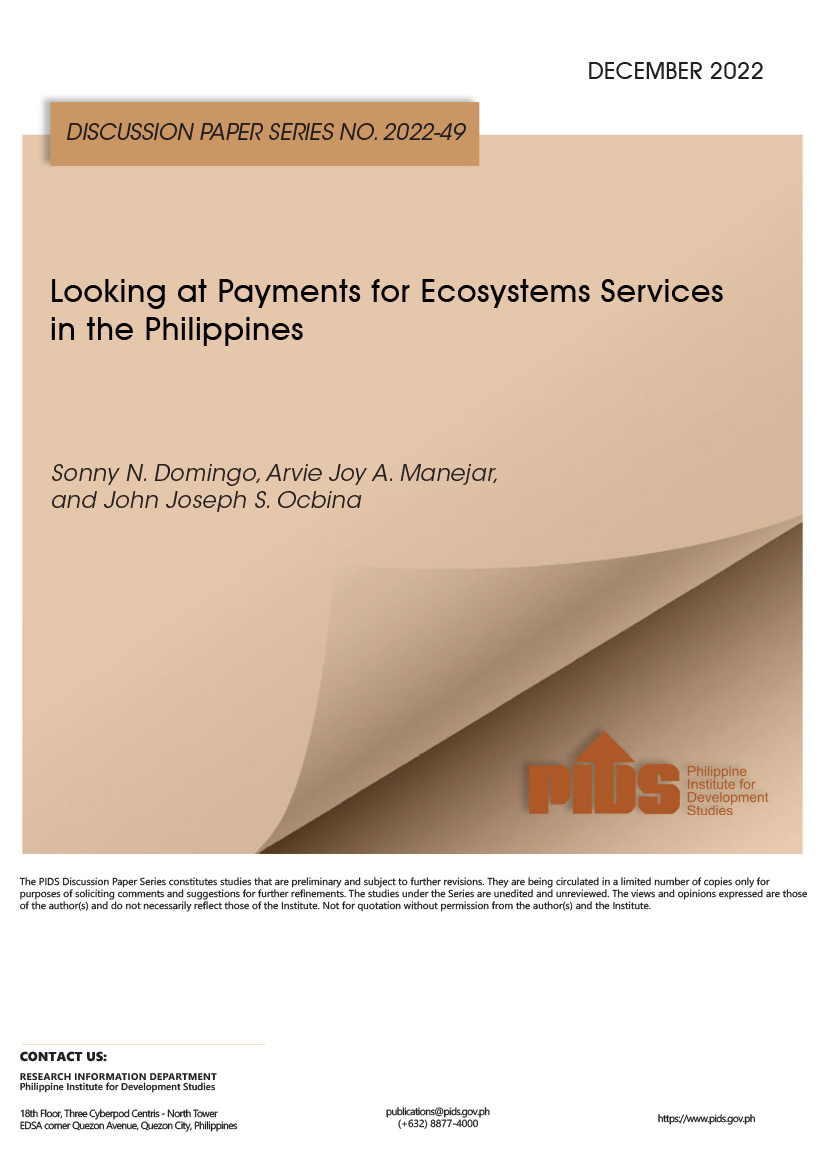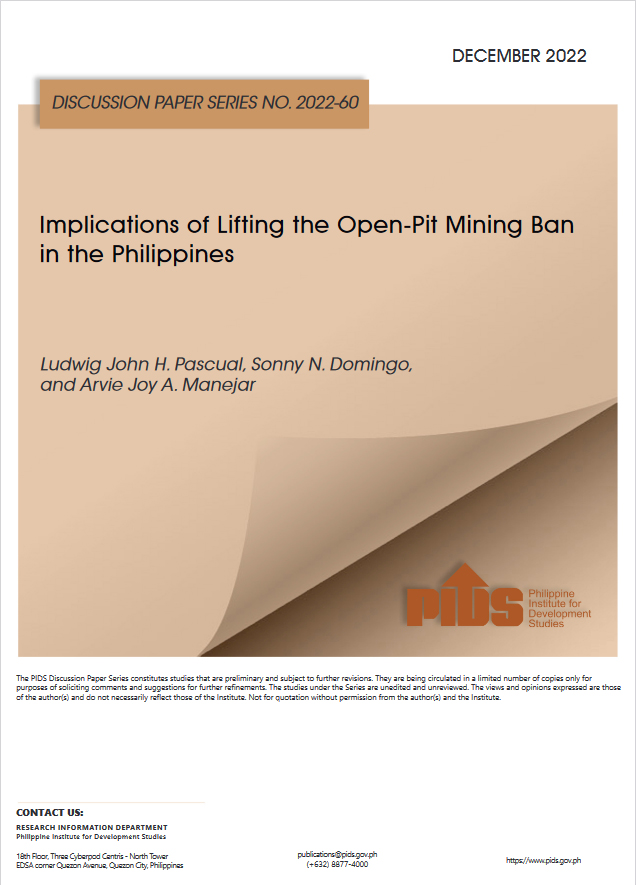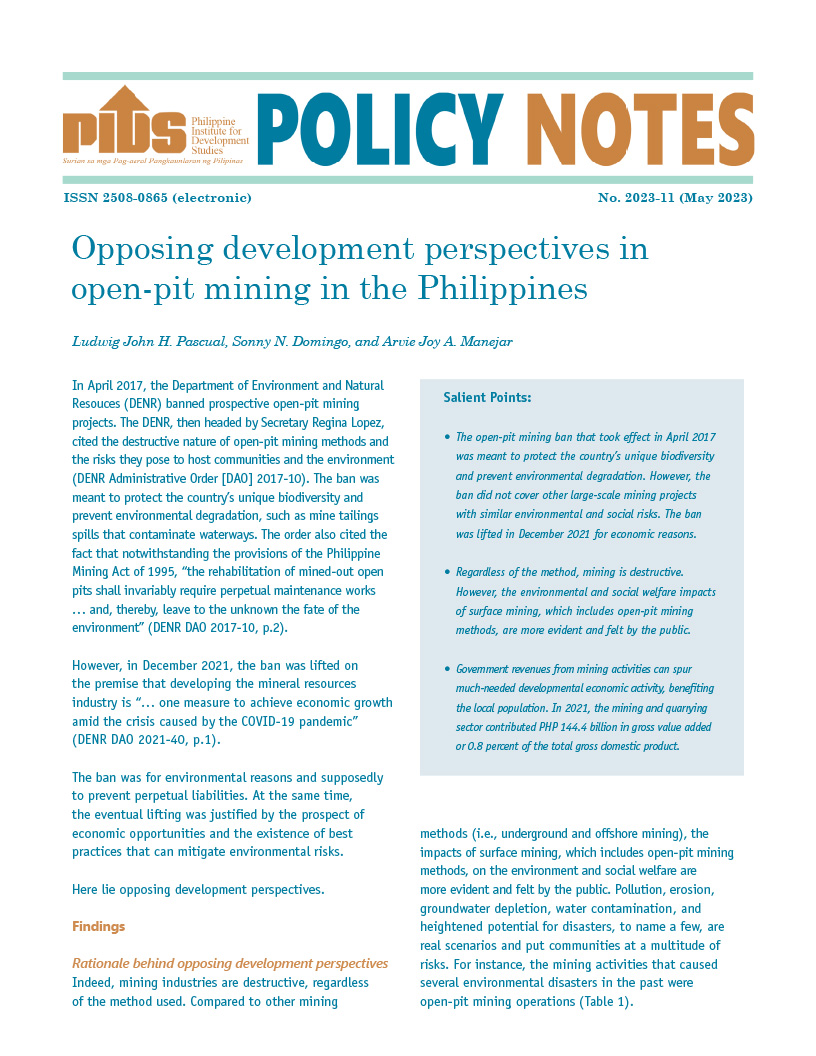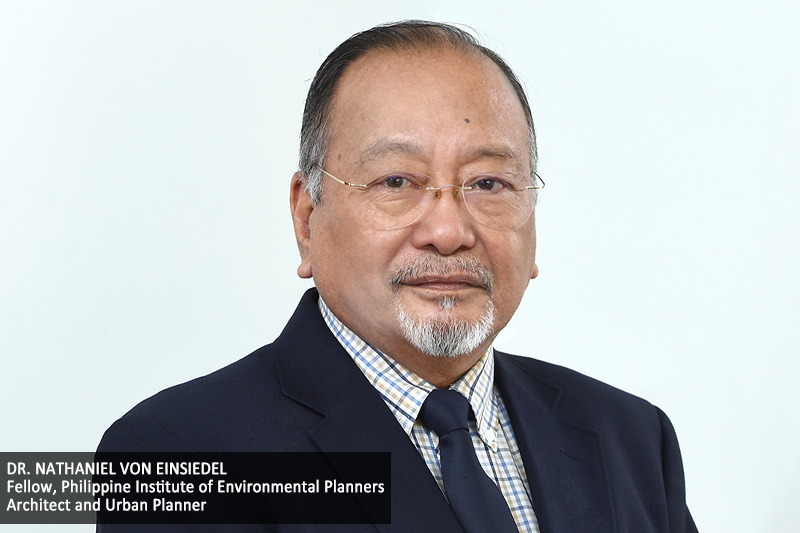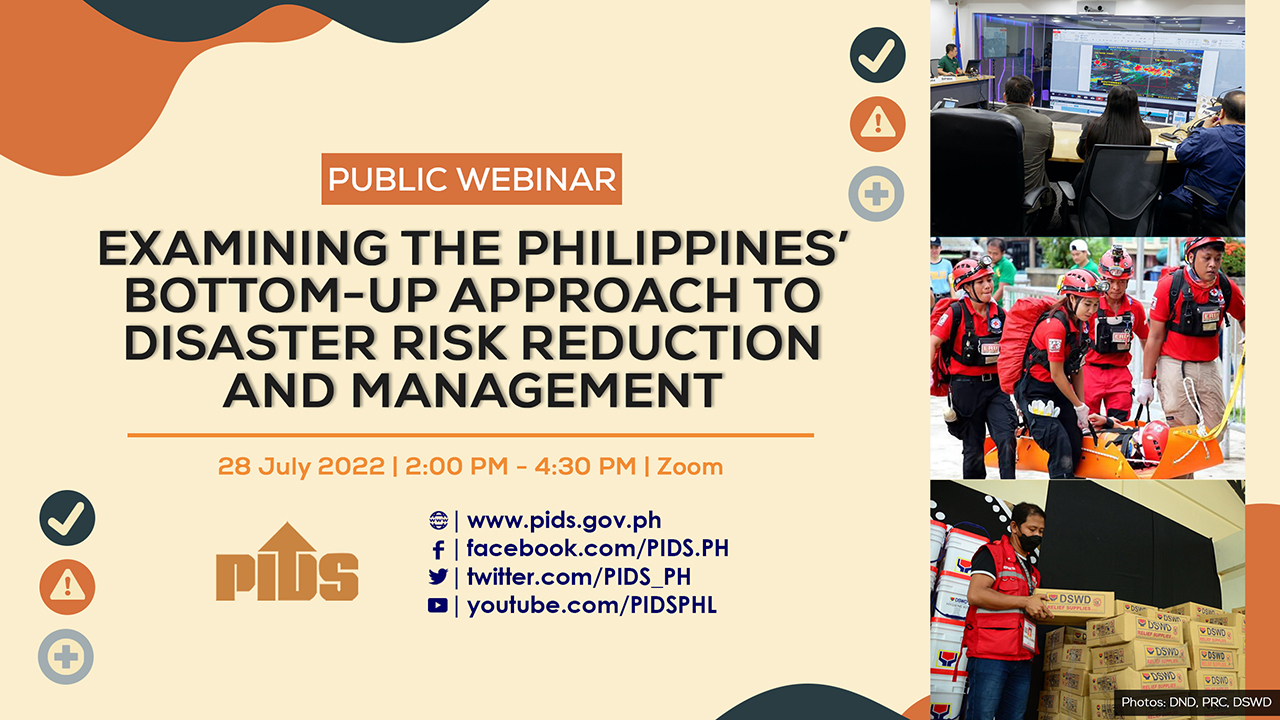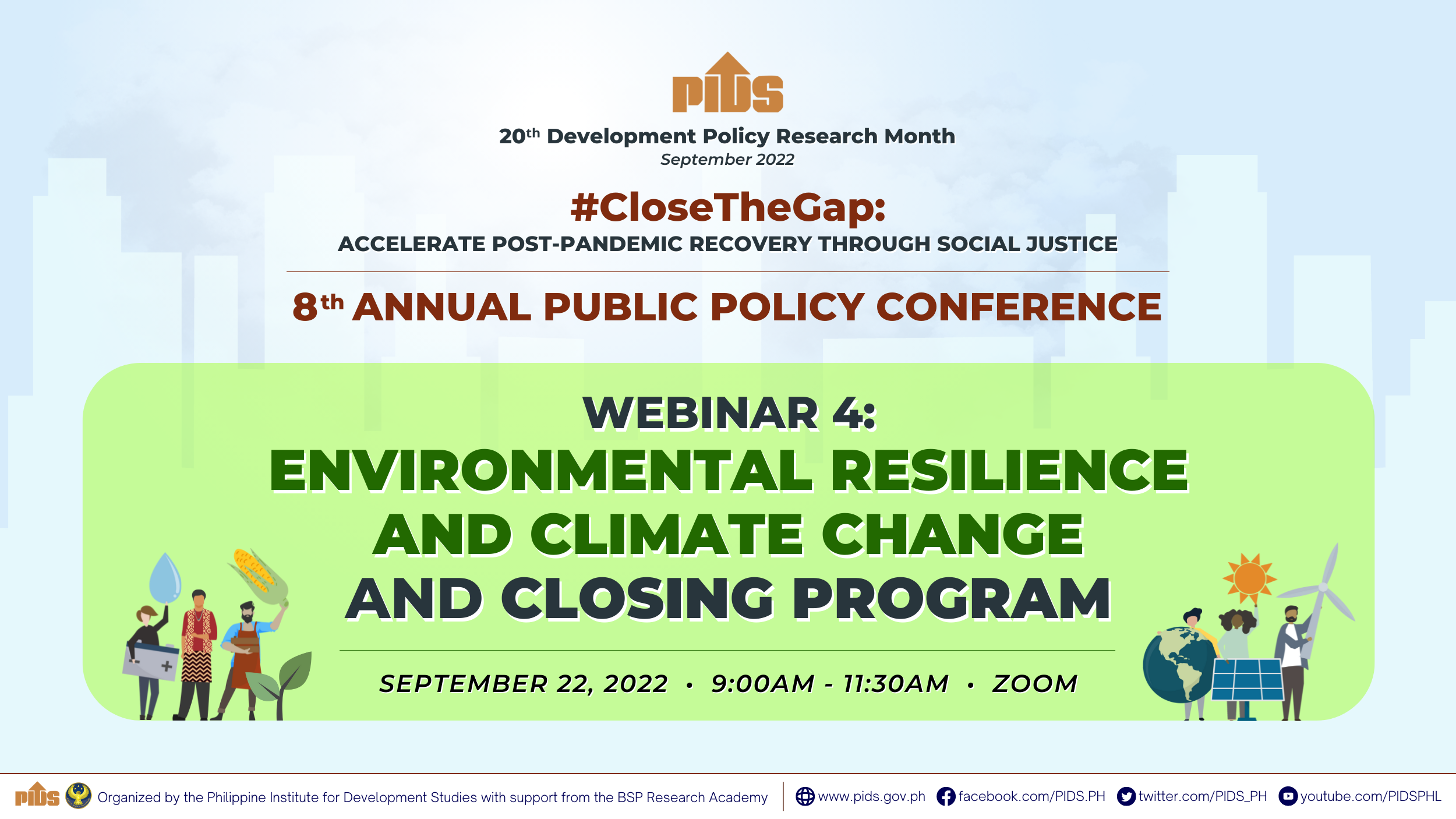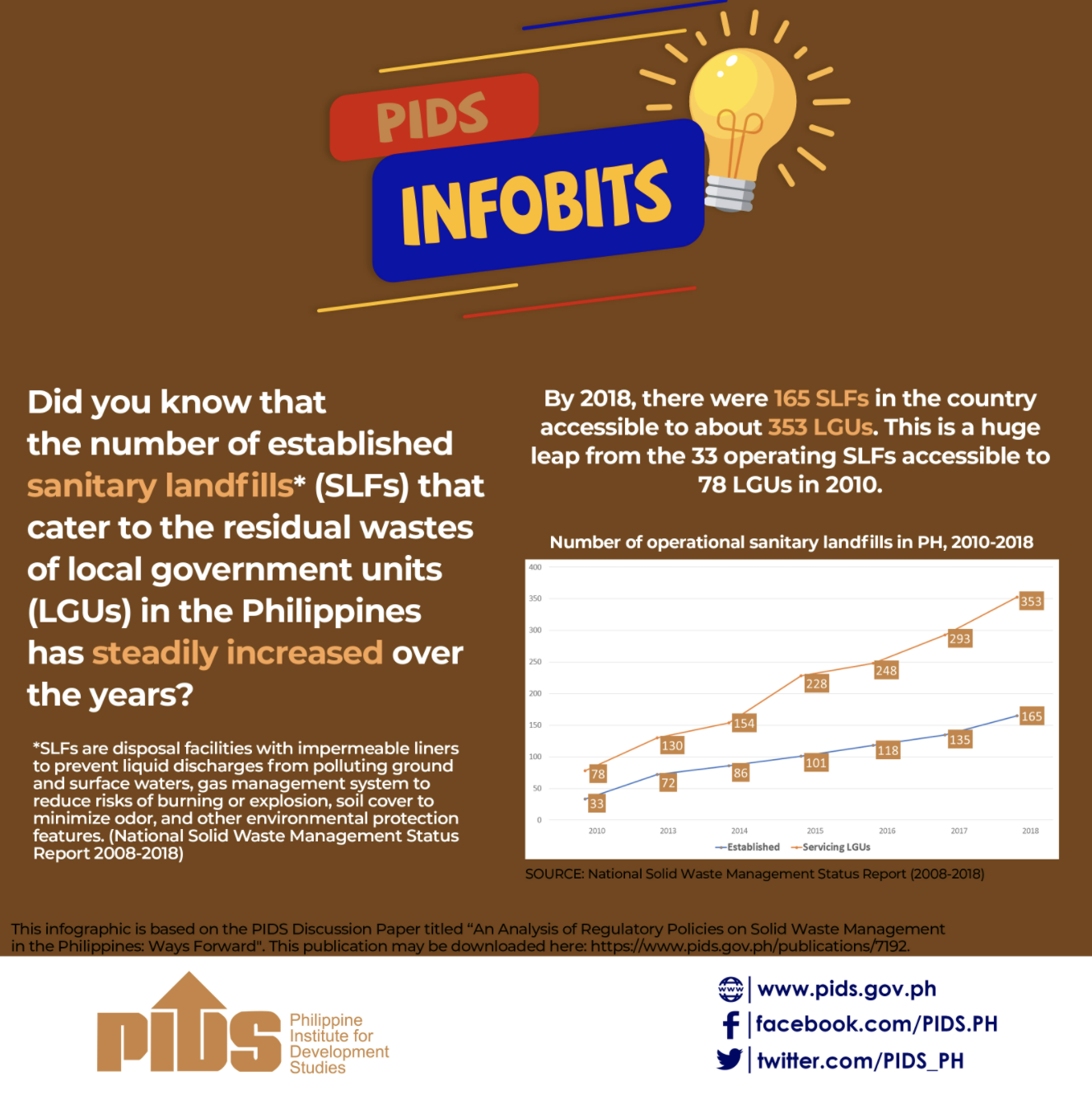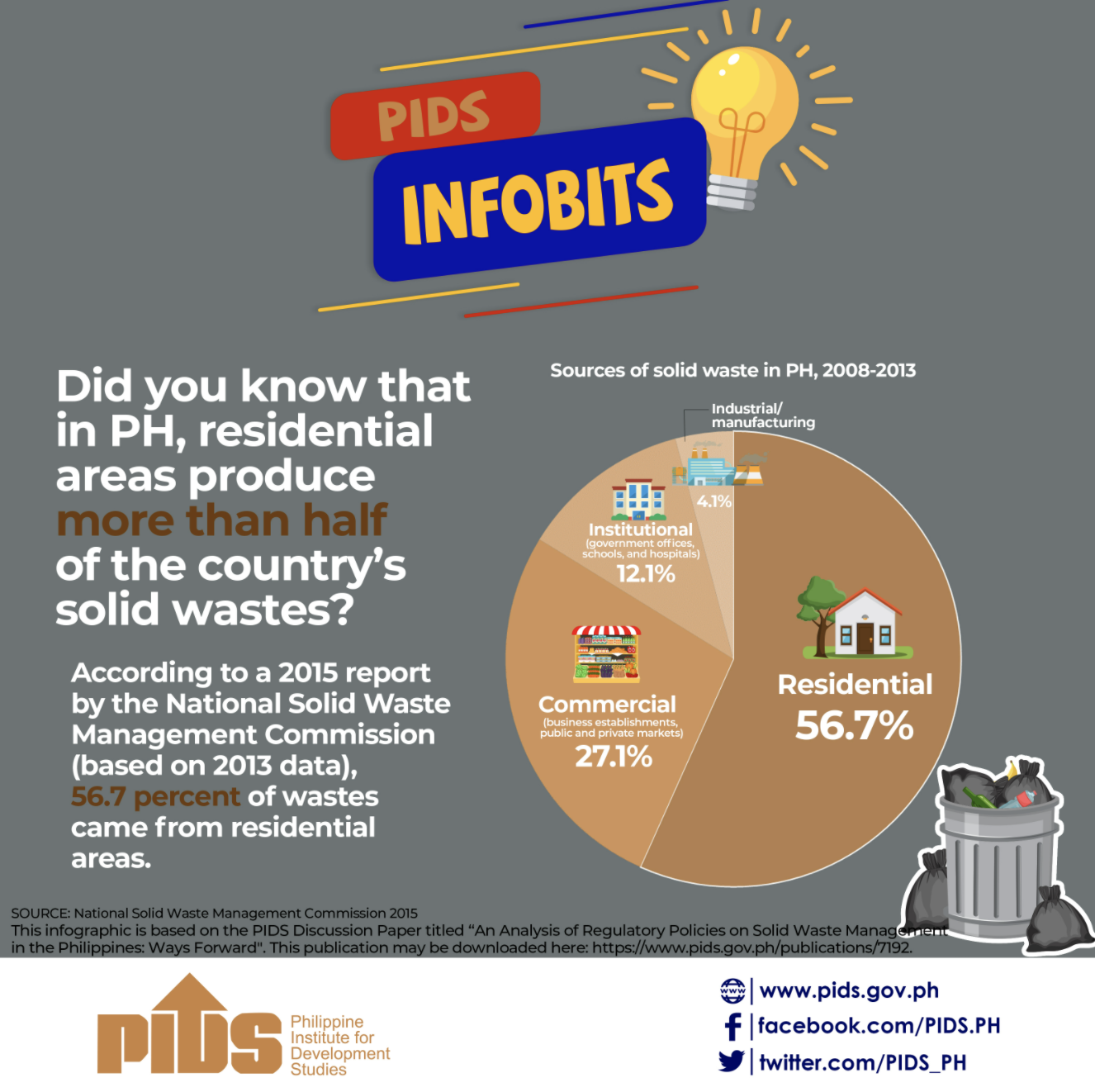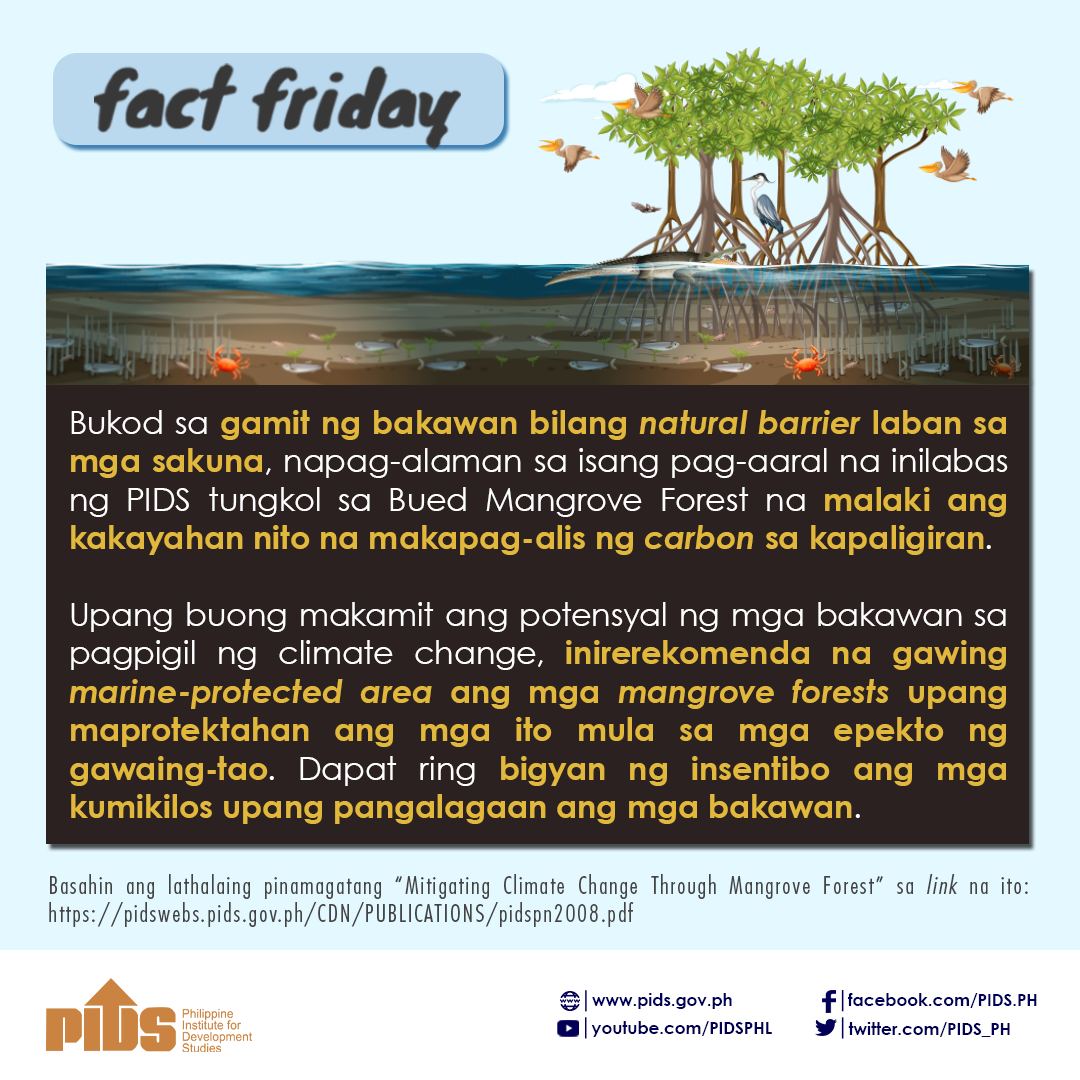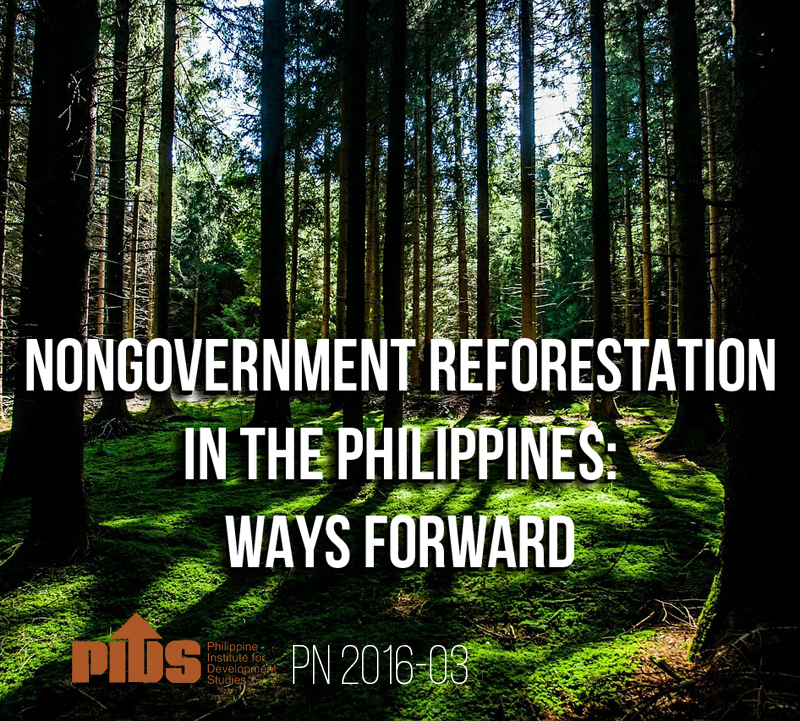
Nongovernment reforestation, or tree planting activities conducted by private land owners, organizations, and citizens, has been declining despite the introduction of the National Greening Program (NGP). Launched in 2011, the NGP is a priority program of the government that aims to rehabilitate the forests and, at the same time, to reduce poverty; promote food security, environmental stability, and biodiversity conservation; and enhance climate change mitigation and adaptation.
According to a study by state think tank Philippine Institute for Development Studies (PIDS), nongovernment reforestation contributed only about 2 percent of the total reforested area in 2013. This figure is much lower compared to the 56 percent of total area that private entities and individuals reforested in 2005.
PIDS Senior Research Fellow Danilo Israel, author of the study, noted that nongovernment reforestation contributed a large share in reforestation before the early 2000s. However, at the turn of the millennium, its contributions to reforestation efforts dropped to 20 percent from 39 percent in the 1990s. It continued to decline to 6.94 percent in the early 2011, just as the government launched the NGP.
Nongovernment reforestation occurs through agreements between the government and various nongovernment groups, such as forest agriculture communities, indigenous peoples, and industry entities and private groups. Nongovernment reforestation was driven by programs like community-based forest management agreements, integrated forest management agreements, socialized industrial forest management agreements, tree farm lease agreements, agroforestry farm lease agreements, industrial tree plantation lease agreements, industrial tree plantations, and Presidential Decree 1153 that requires every Filipino citizen to plant one tree every month for five consecutive years.
From the 1960s to the 1990s, the country suffered massive forest cover and biodiversity loss due to unchecked exploitation. Prior to the 1970s, the country has always relied on government programs to manage its forest resources. To mobilize better forestry protection and management, the government passed laws that would grant rights and responsibilities to nongovernment entities and enjoin them to the cause.
A good way to revive the contribution rate of nongovernment reforestation is to work through private landowners, organizations, and citizens. According to Israel, "private reforestation has been the main driver of nongovernment reforestation. However, it faces many obstacles and is generally left out of large-scale government reforestation programs like the NGP."
Israel recommends that since private reforestation has outperformed other nongovernment reforestation programs in the past, the country's policymakers should look into optimizing its performance by addressing institutional, production, and marketing issues that stand in the way.
"Harmonization of laws and regulations is a good place to start. Developing a coherent Sustainable Forest Management Act and Comprehensive Land Use Act would reassure private investors that their interests are protected. Right now, part of the institutional issues faced by private reforestation entities is the inconsistencies in relevant laws and policies, the lack of government-assisted programs, and complications related to security of land tenure and contesting land claims," Israel explained.
Moreover, Israel indicated that government has to give the private sector incentives to expand their reforestation operations. Tree planting is a risky business especially when it comes to prices. Poaching, diseases, and natural calamities pose real threats to private investments. Tree farming in itself might be a hard sell, but Israel argued that "agroforestry and forestry tourism as alternative ventures can be promoted."
To help address input price risk, government seedling nurseries must be capacitated to provide steady supply of good quality of seedlings at cheaper prices. More stringent laws against poaching must also be put in place such as having an effective reward system for catching tree poachers and a higher penalty for offenders including sufficiently long prison sentences. Likewise, government should extend crop insurance coverage to tree planting and conduct better anti-disease and pest control activities.
Lastly, government should assist tree farmers market their products through better organization, especially when it comes to entering and engaging the markets here and abroad, and provision of better transport infrastructure.
"Government should help tree farmers organize themselves into marketing cooperatives. This way, they can have better access to international markets for commercial logs and processed wood products. Cooperatives, for example, can also invest in commonly owned equipment and facilities, such as chain saws and trucks, for harvesting and transporting logs to markets by their members," Israel recommended.
At the same time, road and bridge infrastructure in the rural areas must also be improved to hasten the transportation of tree production inputs and harvested logs from the planting sites to the holding areas and markets.
Private reforestation is one facet of nongovernment reforestation, founded on the principle of engaging citizens and nongovernment groups to care for, protect, and help manage the country’s remaining forest resources. It is to the government's interest to give its private partners more opportunities to participate and enhance conservation efforts. ###
If you wish to learn more about non-government reforestation, you make access the Policy Note here
According to a study by state think tank Philippine Institute for Development Studies (PIDS), nongovernment reforestation contributed only about 2 percent of the total reforested area in 2013. This figure is much lower compared to the 56 percent of total area that private entities and individuals reforested in 2005.
PIDS Senior Research Fellow Danilo Israel, author of the study, noted that nongovernment reforestation contributed a large share in reforestation before the early 2000s. However, at the turn of the millennium, its contributions to reforestation efforts dropped to 20 percent from 39 percent in the 1990s. It continued to decline to 6.94 percent in the early 2011, just as the government launched the NGP.
Nongovernment reforestation occurs through agreements between the government and various nongovernment groups, such as forest agriculture communities, indigenous peoples, and industry entities and private groups. Nongovernment reforestation was driven by programs like community-based forest management agreements, integrated forest management agreements, socialized industrial forest management agreements, tree farm lease agreements, agroforestry farm lease agreements, industrial tree plantation lease agreements, industrial tree plantations, and Presidential Decree 1153 that requires every Filipino citizen to plant one tree every month for five consecutive years.
From the 1960s to the 1990s, the country suffered massive forest cover and biodiversity loss due to unchecked exploitation. Prior to the 1970s, the country has always relied on government programs to manage its forest resources. To mobilize better forestry protection and management, the government passed laws that would grant rights and responsibilities to nongovernment entities and enjoin them to the cause.
A good way to revive the contribution rate of nongovernment reforestation is to work through private landowners, organizations, and citizens. According to Israel, "private reforestation has been the main driver of nongovernment reforestation. However, it faces many obstacles and is generally left out of large-scale government reforestation programs like the NGP."
Israel recommends that since private reforestation has outperformed other nongovernment reforestation programs in the past, the country's policymakers should look into optimizing its performance by addressing institutional, production, and marketing issues that stand in the way.
"Harmonization of laws and regulations is a good place to start. Developing a coherent Sustainable Forest Management Act and Comprehensive Land Use Act would reassure private investors that their interests are protected. Right now, part of the institutional issues faced by private reforestation entities is the inconsistencies in relevant laws and policies, the lack of government-assisted programs, and complications related to security of land tenure and contesting land claims," Israel explained.
Moreover, Israel indicated that government has to give the private sector incentives to expand their reforestation operations. Tree planting is a risky business especially when it comes to prices. Poaching, diseases, and natural calamities pose real threats to private investments. Tree farming in itself might be a hard sell, but Israel argued that "agroforestry and forestry tourism as alternative ventures can be promoted."
To help address input price risk, government seedling nurseries must be capacitated to provide steady supply of good quality of seedlings at cheaper prices. More stringent laws against poaching must also be put in place such as having an effective reward system for catching tree poachers and a higher penalty for offenders including sufficiently long prison sentences. Likewise, government should extend crop insurance coverage to tree planting and conduct better anti-disease and pest control activities.
Lastly, government should assist tree farmers market their products through better organization, especially when it comes to entering and engaging the markets here and abroad, and provision of better transport infrastructure.
"Government should help tree farmers organize themselves into marketing cooperatives. This way, they can have better access to international markets for commercial logs and processed wood products. Cooperatives, for example, can also invest in commonly owned equipment and facilities, such as chain saws and trucks, for harvesting and transporting logs to markets by their members," Israel recommended.
At the same time, road and bridge infrastructure in the rural areas must also be improved to hasten the transportation of tree production inputs and harvested logs from the planting sites to the holding areas and markets.
Private reforestation is one facet of nongovernment reforestation, founded on the principle of engaging citizens and nongovernment groups to care for, protect, and help manage the country’s remaining forest resources. It is to the government's interest to give its private partners more opportunities to participate and enhance conservation efforts. ###
If you wish to learn more about non-government reforestation, you make access the Policy Note here

